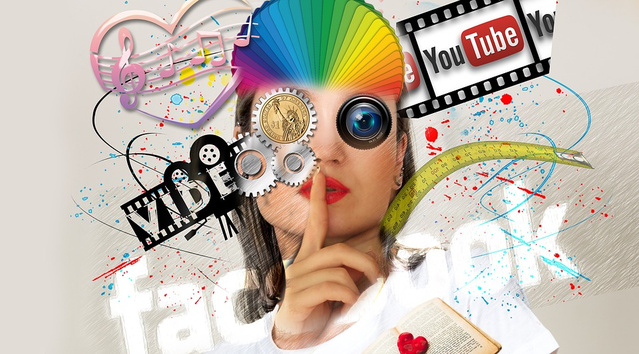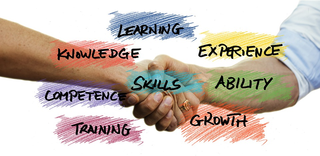Identity
Where Does Identity Come From?
Fifty years of psychology offers insights into our self-concepts.
Posted July 23, 2022 Reviewed by Vanessa Lancaster
Key points
- Comparisons with others and reflections on our experiences form our sense of identity.
- Through psychology's various lenses, we have studied the extent to which we see ourselves through comparisons or internal observations.
- Ultimately, some people see themselves more through comparisons; others use an internal taxonomy.

On July 21st, David Brooks wrote a column for The New York Times addressing the question of whether our lives are motivated by a quest for “status,” basically a comparison with others in which we emerge with a ranking and continually seek superiority, or “story,” building a sense of identity based on our own specific background, experiences, gifts and challenges, values, and reflections.
The Brooks essay brought me back to one of the earliest questions I explored in psychology: What contributes to our senses of identity?
Fifty years ago, psychology was divided into subspecialties. Developmental experts like Jerome Kagan or Sandra Scarr asked about nature/nurture: how much of our personality and later character comes from biological givens (complete with genetic heritage), and how much from experiences and maturity? How malleable are we? Learning laboratories asked, “How does change take place?” Motivation researchers looked at pleasure and pain.
Soon ego psychologists like Jeanne and Jack Block or Erik Erikson focused on the intrinsic rewards of mastery.
Personality psychologists dove into the phenomenology of “flow” (Csikszentmihaly) or conditions that underscore or interfere with “intrinsic motivation” (Mark Lepper). The importance of play in development, especially its role in capacity for and respect for creative activity, was clear by the early 1980s.

A whole branch of personality psychologists broke off from the mainstream, seeking to label personality dimensions, their antecedents, and consequences. Instead, they focused on the “stories of lives.”
Early psycho-biographers like Dan McAdams or William Runyan often closely resembled clinicians who studied the uniqueness of individuals, how they made sense of their lives, and how they could become more conscious of the sources of their emotions, beliefs, and behaviors.
Some of this study was more theoretical, viewed through and updating propositions from Freud, Jung, or Allport. Other researchers branched off, focusing on specific aspects of identity, like unconscious power, a transcendent reality that energetically directed attraction, or family dynamics and the impact of close relationships, for better or worse.
Social psychologists reached into the family and beyond to look for relationship qualities and Individual factors that rendered them more or less influential. Two of my favorites are Bill McGuire, who examined a tendency to compare ourselves with others in our social fields, and J. Richard Hackman crafted a brilliant theory about “The influences of groups on individuals.”
In the classroom, Hackman argued, “The groups you join will inevitably influence who you are and who you become; choose them carefully.” Implied in his advice was an assumption that people are capable of conscious choice and “free will,” even in the context of powerful forces that pull to manipulate how we behave.
Throughout all, Henry Murray’s question has been re-addressed and rephrased: “How are all people in some ways like all other people, in some ways like some other people, in some ways like no other people.” Underlying this question is that of identity: To what extent do we see ourselves as part of humanity, part of various groups, or unique because of our own genetic makeup and experiences that have interacted with it?

Thus Brooks’s question: is identity crafted through comparisons in status across social fields or from a specific story massaged by historical events and potentially directed through conscious choice?
My language pyramid again offers at least seven perspectives:
- Cells: Are we about our physics and chemistry, the neurons that light up or chemicals that flood and direct us when we are attracted to or repelled by a possible (or actual) experience? Today’s interest in neuropsychology is enormous.
- Organs: Do our organs direct our impulses and choices -skin that tingles when touched or a heart that quickens with excitement? A stomach that revolts in disgust or facial muscles that freeze with fear?
- Biological systems: Is our perception of “meaning” drawn from muscular tension that calls us to fight, flee or freeze? Or a sense of connection with others when the parasympathetic nervous system sends oxytocin (the “hugging” hormone) coursing across our limbs?
- Psychological level: Is our “identity” based on labeling these biological experiences — as “pleasure” or “pain,” as “good” or “bad,” assigning value to “stress,” “grit,” or “struggle” or, conversely, to “relaxation,” “receiving,” or “connecting”? Do we see ourselves as our thoughts, feelings, behaviors, and choices?
- Social psychological: Do we look around, generate, and imagine “possible selves”? Then seek to create or avoid their realization, as explored by Hazel Markus and Paula Nurius?
- Culture. In the 1970s, Rokeach created a list of “values” based on experiences that could motivate or guide behavior. He compared them across cultures. Some values were more solitary, like “wisdom” or “freedom,” others rooted in an interpersonal field (for example, “mature love” or ”true friendship” ), and still others in potential status by comparison (e.g., “success” or “national security”).
Generations know the latter through the When Harry Met Sally scene with the line “I’ll have what she’s having.” We read books, watch movies, follow social media stories, or simply watch others who influence our notions about current or future identities. They clarify possibilities and help us select direction so that, at choice points in our lives, we can enlist consciousness to help direct us by providing options based on examples of others, for good or for bad.
- Spiritual. The alternative is to find inspiration or guidance from our own lives or an ideal.
I grew up with no idea what actually did make people happy. My fantasies were fueled by advertisements designed to manipulate emotions and direct people to buy things based on hopes of avoiding pain or increasing pleasures. But only time, experimentation, and happenstance were able to teach me what actually does make me suffer, feel joy in delight, or thrills in mastery.
The love that filled my heart and made it expand in capacity over the years as I have watched my children and now grandchildren grow and become the unique people they are becoming never ceases to bring me awe, hope, and gratitude.
The emptiness that has sometimes accompanied an experience recommended by critics or peers, rated as “a must,” has helped me learn to respect my judgment. Following these breadcrumbs has helped me become the person I want to be. What more could I ask for?
Copyright 2022 Roni Beth Tower
References
Csikszentmihalyi, M. (1975). Beyond Boredom and Anxiety: Experiencing Flow in Work and Play, San Francisco: Jossey-Bass.
Hackman, J. R. (1992). Group influences on individuals in organizations. In M. D. Dunnette & L. M. Hough (Eds.), Handbook of industrial and organizational psychology (pp. 199–267). Consulting Psychologists Press.
Markus, H., & Nurius, P. (1986). Possible selves. American Psychologist, 41(9), 954–969. https://doi.org/10.1037/0003-066X.41.9.954
McGuire WJ, Padawer-Singer A. Trait salience in the spontaneous self-concept. Journal of Personality and Social Psychology. 33: 743-54. PMID 1271234 DOI: 10.1037//0022-3514.33.6.743
Rokeach, M. (1973). The nature of human values. Free Press.
Runyan, W.M. (1982). Life Histories and Psychobiography, Oxford University Press.
Singer, Dorothy & Singer, Jerome. (1990). The House of Make-Believe: Children’s Play and the Developing Imagination. 10.4159/9780674043688.




